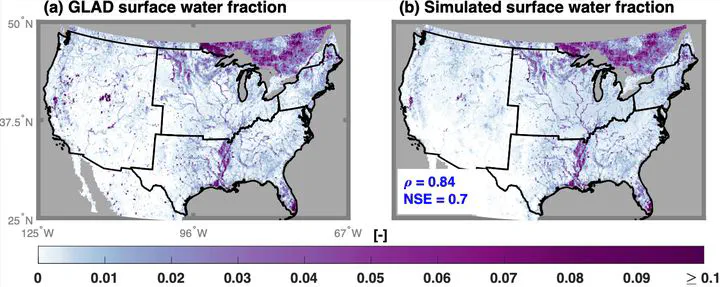Climate change will reduce North American inland wetland areas and disrupt their seasonal regimes
Mar 18, 2024· ,,,,,,,·
1 min read
,,,,,,,·
1 min read
Donghui Xu
Gautam Bisht
Zeli Tan
Eva Sinha
Alan v. Di Vittorio
Tian Zhou
Valeriy Y. Ivanov
L. Ruby Leung

Abstract
Climate change can alter wetland extent and function, but such impacts are perplexing. Here, changes in wetland characteristics over North America from 25° to 53° North are projected under two climate scenarios using a state-of-the-science Earth system model. At the continental scale, annual wetland area decreases by ~10% (6%-14%) under the high emission scenario, but spatiotemporal changes vary, reaching up to textpm50%. As the dominant driver of these changes shifts from precipitation to temperature in the higher emission scenario, wetlands undergo substantial drying during summer season when biotic processes peak. The projected disruptions to wetland seasonality cycles imply further impacts on biodiversity in major wetland habitats of upper Mississippi, Southeast Canada, and the Everglades. Furthermore, wetlands are projected to significantly shrink in cold regions due to the increased infiltration as warmer temperature reduces soil ice. The large dependence of the projections on climate change scenarios underscores the importance of emission mitigation to sustaining wetland ecosystems in the future.
Type
Publication
Nature Communications
In this work, we developed a sub-grid infiltration scheme to improve the pluvial inundation process in E3SM.